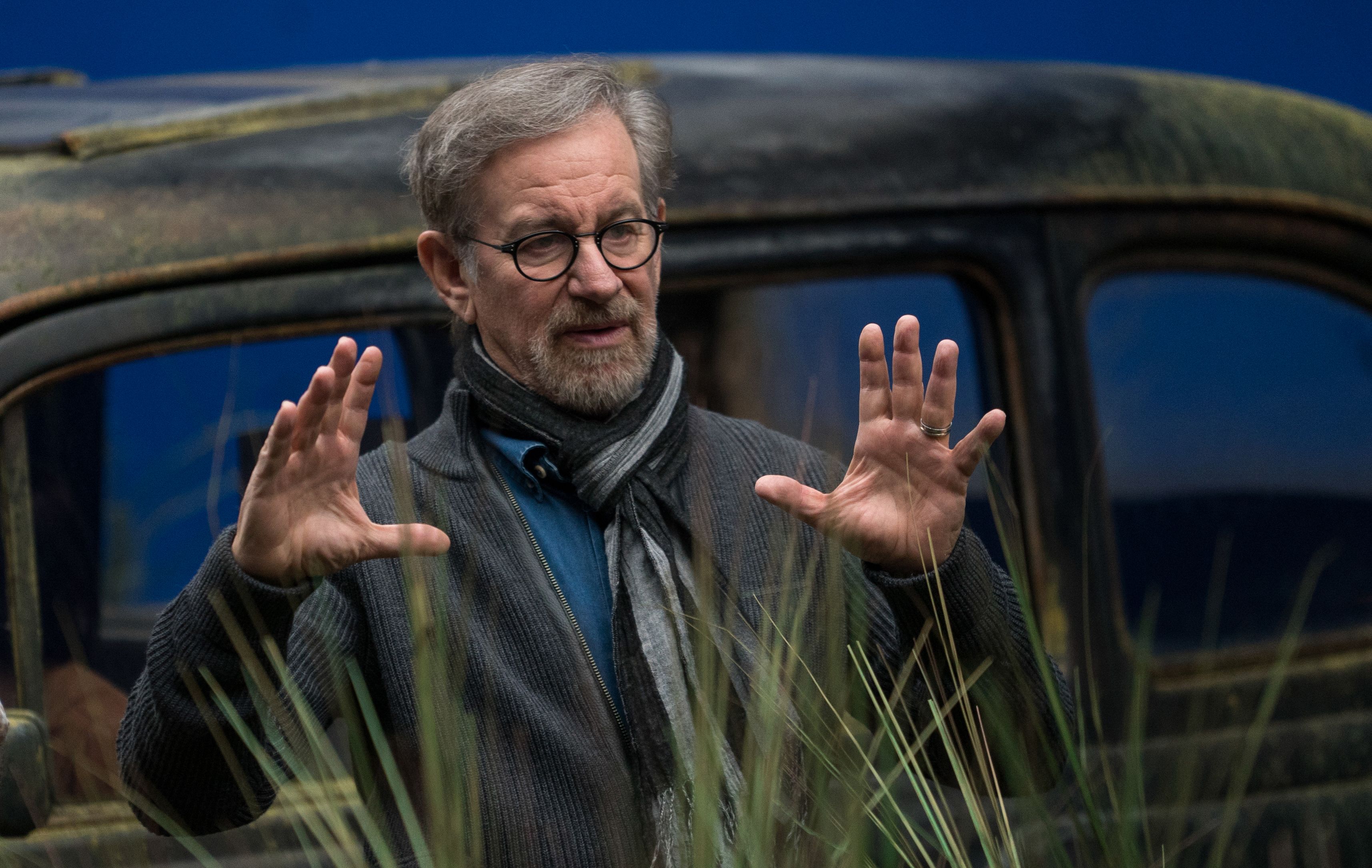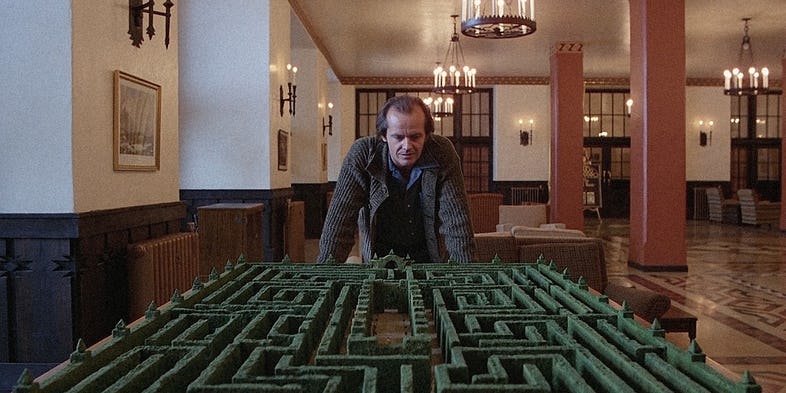Genre: Sci-Fi
Premise: (from IMDB) When the creator of a virtual reality world called the OASIS dies, he releases a video in which he challenges all OASIS users to find his Easter Egg, which will give the finder his fortune.
About: Time to answer that question I asked a couple of months ago. Which movie will do better at the box office? A Wrinkle In Time or Ready Player One? RP1 took in 53 million this weekend. If you look at percentage return on investment when compared to A Wrinkle in Time, (Wrinkle’s budget was 100 million, RP1’s was 175 million), Wrinkle actually fared better on its opening weekend. We called that movie a bomb. So this has to be a bomb too, right? I would say that RP1 isn’t so much a bomb as it is a grenade. The reason being that RP1 is going to do way better internationally than A Wrinkle in Time, which should make the film profitable. Wrinkle in Time, however, will be a loss for Disney. That’s not to say RP1 hasn’t used some trickery to make its less-than-stellar opening weekend look better than it is. RP1 opened a day earlier than usual (on Thursday) AND got an extra day after the weekend with the holiday (Monday). This helped them to claim a “weekend” haul with two extra days’ worth of money lumped in. Looks like the Easter Bunny isn’t the only one hiding a few extra eggs around the yard. The reality is, when WB did their pre-film projections, they were banking on a 75 million dollar opening weekend AT LEAST. And if you look at it that way, RP1 is a financial disappointment. But is the movie actually good!? That’s the ultimate question. Let’s find out.
Writer: Zak Penn (based on the novel by Ernest Cline)
Details: 140 minutes
/cdn.vox-cdn.com/uploads/chorus_image/image/59124873/RPO_TRLR_0173.0.jpg)
I’d heard some disappointing things leading up to the release of Ready Player One, the most frustrating of which was that Steven Spielberg went off and shot The Post while Ready Player One was being edited.
Some of you may see this as a non-story. But to me it’s everything. One of the biggest issues with Ready Player One is that it’s all over the place. And because its subject matter made it particularly susceptible to being “all over the place,” it needed someone who was 100% committed to keep it on track. If Spielberg was shooting The Post while Ready Player One was being edited, it meant he was also involved in pre-production and casting and scheduling and meetings for The Post while Ready Player One was being shot. His mind was in two places at once. Which is why this movie feels so scattered.
Problem #2: Spielberg gave a Ready Player One promotional interview where he was asked about getting the rights to all the properties in the rights-heavy film. Spielberg responded with a befuddled, “Oh yeah, I didn’t deal with that. The studio people were in charge of all that.” I’m sorry but whhhhuuuhhh did you just say? Shouldn’t you be the one leading the charge on this!? Not just because getting the rights was everything with Ready Player One, but because you’re STEVEN SPIELBERG and can get anything you want.
Because here’s the thing. The novel for Ready Player One was all about Halliday’s love for the 80s. I know nostalgia is controversial right now but the 80s were the heartbeat of this book. Halliday built the Oasis as a way to live forever as a child in that decade. So there was thematic unity – From Pac-Man to Back to the Future to Tears for Fears – in every pop culture reference. By contrast, this movie is a mish-mash of whatever the hell pop culture references you can think of over the last 40 years, which contributes to the pervasive messiness. I mean Iron Giant missed the 80s by a decade! Why is he featured in this??? It’s so random.

A more dedicated director would’ve put his foot down and said, “No. It doesn’t make sense if it’s ALL pop culture. It needs to be pop culture from ONE SPECIFIC time period.” There’s some SUPER GEEKY screenwriting history connected to all this. Zak Penn, the screenwriter who adapted RP1, is forever enshrined in screenwriting lore for losing his shit after his breakthrough spec, The Last Action Hero, was rewritten to expand the 80s pop culture movie references Penn had based the movie on, to movie references from every era. I’m getting off track though, just like Spielberg! So let’s loop back.
For those of you who don’t know anything about Ready Player One, it’s set in 2040-something, and focuses on a world that spends the majority of its time inside the “Oasis,” basically the virtual version of the internet.
Wade (or “Parzival” as he’s known in the Oasis), our plucky teenaged hero, is one of millions who are hunting for three keys inside the Oasis by its since-deceased creator, Roy Hallidy. Hallidy wrote into his will that whoever finds these three keys will inherit the Oasis itself, which is worth in the neighborhood of a trillion dollars.
With his two best friends, the super-hot Art3mis and the super-cool “H,” Parzival must hold off the evil organization, IOI, from finding the three eggs first and turning the Oasis into a heartless money-thieving conglomerate.
So Spielberg didn’t get the big picture stuff right. What bout the characters? Let’s start with Parzival. In the book, Parzival was a walking nobody in the real world. So when he gets that first key and becomes an instant Oasis celebrity? It felt like something huge had happened. Imagine being no one and then becoming the most famous person in the world overnight. The book documented that transition beautifully. In the movie, this was lost. Parzival’s introduction is used strictly to dish out narration and set up the rules of the universe. As a result, we never feel like we know Parzival. And that’s been reflected in how people have reacted to Tye Sheridan’s performance. It’s all very polite. “Yeah, it was okay.” And that’s because they botched the setup for this kid.

One of the oldest screenwriting tips in the book is to “establish your character’s normal world before throwing them into the crazy world.” Look at one of the inspirations for Parzival, Marty McFly. In Back to the Future, we see Marty McFly at school, we experience his aspirations to become a rock star, we get to know his girlfriend, we hang out with his weirdo family. We see HIS NORMAL LIFE. Therefore, when he’s thrown into the crazy world (the past), we have something to contrast it with.
That never happens here. Parzival’s “normal life” is limited to a quick slide down a pole and a giant glob of narration that has nothing to do with him. We’re into the Oasis before I even know if Parzival goes to school or this is summer break or what he does with his average day. This is an admittedly different situation from Back to the Future. An argument can be made that the Oasis IS the “normal world” of this reality. But if I was guiding this project, I would’ve established more of Percival’s real world life first. I never truly connected with him and I have a sneaking feeling that was the reason.
Where Ready Player One really falls apart, however, is in the second half of its second act. The characters are all having realizations that none of us are in on (the equivalent of: “Halladay’s pocket protector wasn’t protecting his pocket. It was protecting the planet.” “So you’re saying we need to go to the Zanzibar System?” “Yes!”), the muddy rule-set of the mythology is getting muddier with every scene (If a bad guy dies in the Oasis, his perfectly healthy real-world counterpart has to be replaced with someone else??), and a climax is birthed out of thin air (Uh, I guess we’re all trying to stop the bad guys from playing Atari 2600!).
It’s a shit show.

And looking back on it, Spielberg’s visualization of the Oasis itself is a metaphor for the screenplay. The virtual world of the Oasis is dark, muddy, and unflattering. Which is exactly how this story is treated. You could never quite see what was going on through all the haze. I mean that opening car race scene, which I featured in my screenplay review as having the potential to be legendary, was a giant piece of Transformers-inspired tomfoolery. You never knew what was going on because the camera was always zipping between every street corner, wrecking ball, giant gorilla, and T-Rex it could find. There isn’t a SINGLE CLEAN SHOT of the action. And it made me sad. Steven Spielberg taking his directing cues from Michael Bay? What has this world come to?
/cdn.vox-cdn.com/uploads/chorus_image/image/58996083/cars.0.png)
There’s a moment deep in the script where our five heroic avatars meet each other in the real world for the first time. In an INSTANT the movie came alive. Gone were upside-down gravi-dancing set pieces and in their place were simple medium and close up shots of REAL PEOPLE. Who were playing off each other. Who were having REAL MOMENTS. You could feel how comfortable the director was. It was like, “Where the hell has this been all movie?”
I get it, guys. It’s a movie that takes place in a virtual world. You can’t have a ton of real-world scenes. But the reason those scenes popped was because they were based in simplicity. There was no nonsense going on. It was pure character-driven storytelling. And that’s what we needed more of in the movie, whether that meant more real-world scenes, or applying that ‘simple’ mindset to the Oasis.
I’ll finish off with something that’s going to nip your belt buckle but who am I if I’m not being honest? This is trigger-bait folks. Read at your own risk. Ready? I didn’t like the Shining sequence. This is the sequence everybody’s talking about and I know firsthand people loved it cause audience members were going crazy for it in my screening.

But to me the sequence confirmed why Spielberg doesn’t get the material. The Shining, while released in 1980, is considered by everyone to be a 70s movie. That’s how it identifies. And it’s not what Cline had in mind at all (the sequence wasn’t in the book). Because I’ve read a million articles on Spielberg, I know he’s a Kubrik fanatic, and that this sequence had nothing to do with what was right for the movie, and everything to do with a director who selfishly wanted to recreate one of his directing crush’s famous sets.
Don’t get me wrong. The sequence works in a vacuum. But it doesn’t fit into the whole. It contributes to the “anything goes” mentality where nothing in this film needs to connect, either logically or thematically. The Shining in the same movie as Iron Giant? What??
So is the movie bad? No, the movie isn’t bad. What it is is average. It has a few moments. The stuff in the real world where you could actually see people interacting and expressing emotion was when the film worked best. But the Oasis should’ve been crisper. And cooler! Parzival should’ve been better-constructed. And the screenplay needed to be simplified. The more I think about this, the more I think it should’ve been a TV series. It needed time to breathe and the feature format wasn’t going to allow that. There were a couple of fun scenes here. But Ready Player One was a mess in the Scriptshadow notebook.
[ ] What the hell did I just watch?
[x] wasn’t for me
[ ] worth the price of admission
[ ] impressive
[ ] genius
What I learned: Establish your “normal” world before sending your hero and the audience into the “crazy” world.

